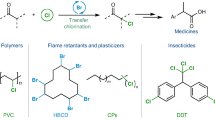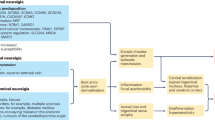Abstract
CERTAIN alkyl phosphates, including a number of widely used insecticides, are toxic to animals, because they irreversibly inhibit acetylcholinesterase1. Acetylcholinesterase (AChE) is reputed to possess an anionic site, which promotes the catalytic activity by binding and orienting substrates containing a cationic group, and an esteratic site where the hydrolytic process takes place. The interaction between alkyl phosphates and AChE yields phosphorylated AChE which is devoid of esterase activity. The inhibited enzyme can be reactivated by nucleophilic substances which displace the phosphoryl group from the enzyme. The high reactivating potency of pyridine-2-aldoxime methiodide (2–PAM) was first reported by Childs et al.2 and Wilson et al.3. The latter authors4 attributed the outstanding activity of 2-PAM to binding of its quaternary ammonium group to the anionic site of phosphorylated AChE, and to a suitable orientation of the reactive oximino group for displacement of the phosphoryl group from the esteratic site.
This is a preview of subscription content, access via your institution
Access options
Subscribe to this journal
Receive 51 print issues and online access
$199.00 per year
only $3.90 per issue
Buy this article
- Purchase on Springer Link
- Instant access to full article PDF
Prices may be subject to local taxes which are calculated during checkout
Similar content being viewed by others
References
Nachmansohn, D., and Feld, E. A., J. Biol. Chem., 171, 715 (1947).
Childs, A. F., Davies, D. R., Green, A. L., and Rutland, J. P., Brit. J. Pharmacol., 10, 462 (1955).
Wilson, I. B., and Ginsburg, S., Biochim. Biophys. Acta, 18, 168 (1955).
Wilson, I. B., Ginsburg, S., and Quan, C., Arch. Biochem. Biophys., 77, 286 (1958).
Poziomek, E. J., Hackley, jun., B. E., and Steinberg, G. M., J. Org. Chem., 23, 714 (1958).
Hobbiger, F., O'Sullivan, D. G., and Sadler, P. W., Nature, 182, 1498 (1958).
Hobbiger, F., Pittman, M., and Sadler, P. W., Biochem. J., 75, 363 (1960).
Kawai, M., Mitomi, M., Hakozaki, K., Egawa, T., and Toraiwa, Y., Boei Eisei, 10, 365 (1963).
Author information
Authors and Affiliations
Rights and permissions
About this article
Cite this article
NISHIMURA, T., TAMURA, C. & UCHIDA, Y. Antidotes in Anticholinesterase Poisoning. Nature 214, 706–708 (1967). https://doi.org/10.1038/214706a0
Issue Date:
DOI: https://doi.org/10.1038/214706a0
Comments
By submitting a comment you agree to abide by our Terms and Community Guidelines. If you find something abusive or that does not comply with our terms or guidelines please flag it as inappropriate.



